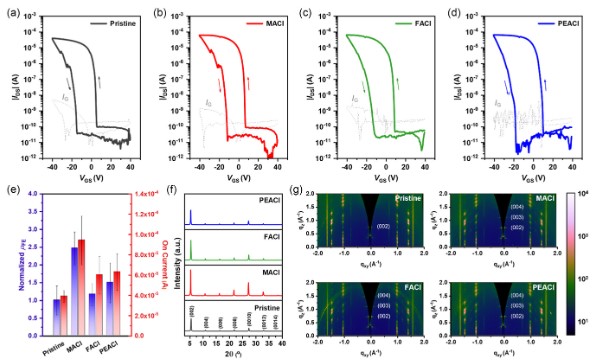Chloride Additives as Crystallinity Modulators in 2D Tin Halide Perovskite Transistors
- 저자
- Hyoungha Ryu˚, Youjin Reo˚*, Wantae Park, Donghyeon Lee, Hamin Choi, Soohwan Yoo, Ao Liu, Huihui Zhu*, Yong-Young Noh*
- 저널명
- Small Structures, 2500055 (2025)
- 년도
- 2025
[Abstract]
Tin (Sn2+)-based halide perovskites have emerged as promising lead-free alternatives for high-performance thin-film transistors (TFTs) due to their low toxicity and excellent hole transport properties. However, difficult control over their rapid film crystallization hinders the device performance and yield. Herein, the incorporation of chloride additives, particularly methylammonium chloride (MACl), into phenethylammonium tin iodide (PEA2SnI4), effectively modulates the crystallization process by forming intermediate complexes within the precursor solution and the film, fabricating large crystallites with minimized defects. The enhanced film quality contributes to efficient charge transport in the channel layers of TFT, where optimized MACl-PEA2SnI4 TFTs exhibit up to a threefold increase in field-effect mobility and a substantial enhancement in the on/off current ratio. The chloride additive engineering can effectively address the fundamental issues of rapid crystallization in Sn2+-based perovskites, providing deeper insights into efficient film quality modulation and charge transport efficiency for electronic applications.
